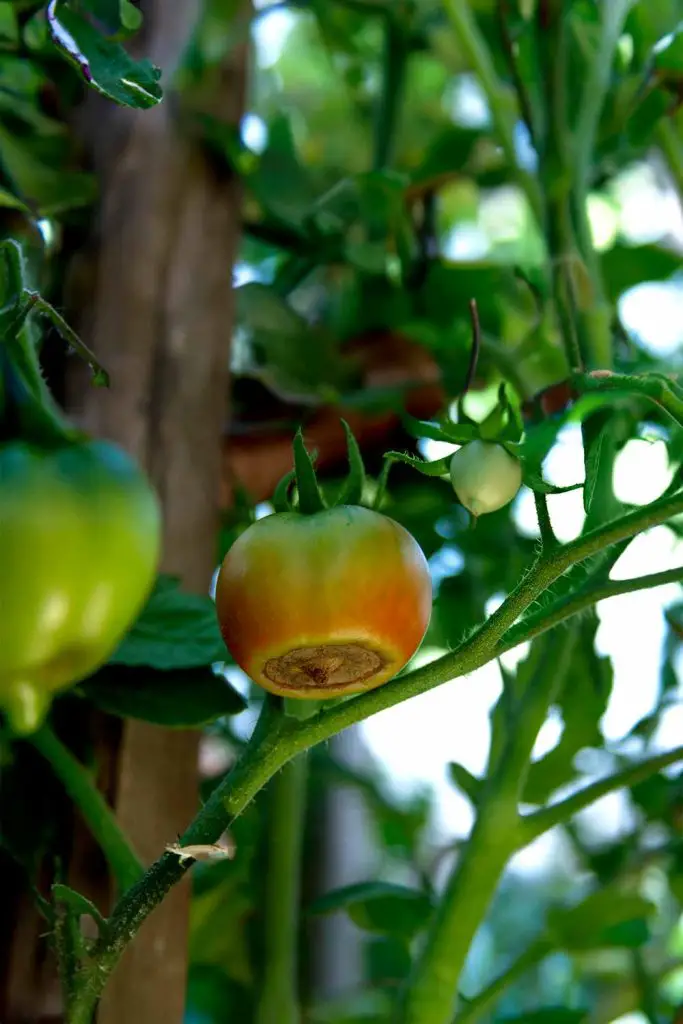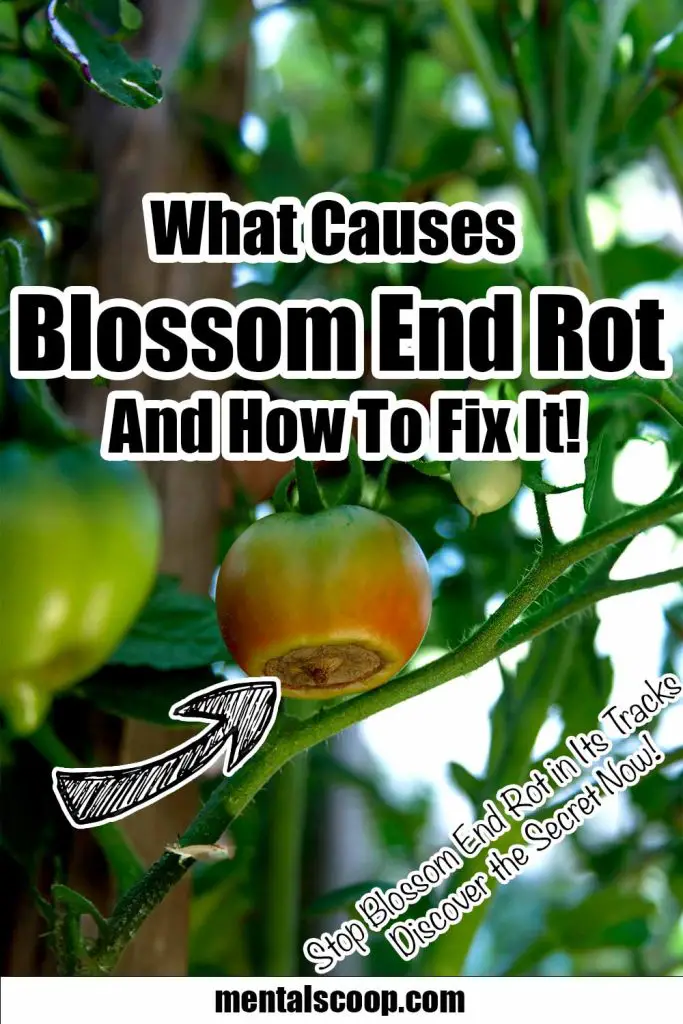What Causes Blossom End Rot & How To Fix It!

Blossom end rot is a common problem that can wreak havoc on your vegetable garden, particularly affecting tomatoes, peppers, eggplants, and squash. This frustrating condition manifests as dark, sunken spots on the blossom end of fruits, leading to unsightly and inedible produce.
Understanding what causes blossom end rot and how to fix it is crucial for any gardener looking to ensure a bountiful harvest. In this comprehensive guide, we will explore the underlying causes, symptoms, prevention strategies, and treatment options for blossom end rot.
Understanding Blossom End Rot
Blossom end rot is not a disease but a physiological disorder caused by a calcium deficiency in the developing fruit. While it primarily affects tomatoes, it can also impact other fruits and vegetables.
The condition typically appears as small, water-soaked spots on the blossom end (the bottom) of the fruit, which eventually enlarge and turn dark brown or black.
The Role of Calcium in Plant Health
Calcium is an essential nutrient for plants, playing a vital role in cell wall structure, growth, and development. It helps maintain cell integrity and is crucial for the proper functioning of cell membranes.
When plants are deficient in calcium, the cell walls weaken, leading to the characteristic symptoms of blossom end rot.
Causes of Calcium Deficiency
Several factors can contribute to calcium deficiency in plants:
- Soil Conditions: Acidic or overly alkaline soils can limit calcium availability. Sandy soils may also lack sufficient calcium.
- Watering Practices: Inconsistent watering, either too much or too little, can disrupt calcium uptake. Plants need a consistent moisture level to absorb calcium effectively.
- Root Damage: Compacted soil, poor aeration, or damage from pests can hinder root development and calcium absorption.
- High Nitrogen Levels: Excessive use of nitrogen-rich fertilizers can promote rapid foliage growth at the expense of fruit development, leading to calcium deficiency in fruits.
Symptoms of Blossom End Rot
Recognizing the symptoms of blossom end rot is the first step in addressing the issue. Look for the following signs:
- Water-Soaked Spots: Initial small, water-soaked lesions at the blossom end of the fruit.
- Dark, Sunken Areas: As the condition progresses, these spots enlarge and become dark, sunken, and leathery.
- Affected Fruits: While the disorder primarily affects tomatoes, it can also be seen in peppers, eggplants, and squash.
Preventing Blossom End Rot
Prevention is key to managing blossom end rot. Here are some strategies to help you avoid this issue:
- Soil Testing and Amendment: Test your soil’s pH and nutrient levels. Amend the soil with lime if it is too acidic, and ensure it is well-drained and rich in organic matter.
- Consistent Watering: Maintain consistent soil moisture. Use mulches to retain moisture and reduce fluctuations in soil moisture levels.
- Proper Plant Spacing: Ensure adequate spacing between plants to promote good air circulation and reduce competition for nutrients.
- Balanced Fertilization: Avoid excessive use of nitrogen-rich fertilizers. Use balanced fertilizers that provide essential nutrients, including calcium.
Treating Blossom End Rot
If you notice signs of blossom end rot, there are steps you can take to manage the condition:
- Remove Affected Fruits: Immediately remove any affected fruits to prevent the spread of the disorder.
- Improve Watering Practices: Ensure your plants receive consistent moisture. Water deeply and regularly, especially during dry periods.
- Foliar Calcium Sprays: Apply calcium sprays directly to the foliage. This can provide a quick fix to improve calcium levels in the short term.
- Soil Amendment: Add gypsum (calcium sulfate) to your soil to increase calcium availability without affecting soil pH.
The Importance of Mulching
Mulching is an effective practice to prevent and manage blossom end rot. Mulch helps regulate soil temperature, retain moisture, and reduce weed competition. Organic mulches like straw, wood chips, or compost can also add nutrients to the soil as they decompose.
Choosing Resistant Varieties
Selecting plant varieties that are less susceptible to blossom end rot can help you avoid this issue. Some tomato and pepper varieties are bred for resistance to this condition. Consult with local nurseries or extension services to find the best varieties for your region.
Long-Term Solutions for a Healthy Garden
Ensuring long-term garden health requires a holistic approach:
- Crop Rotation: Practice crop rotation to reduce soil-borne diseases and nutrient depletion.
- Healthy Soil Practices: Regularly add organic matter to your soil to improve structure, fertility, and moisture retention.
- Regular Monitoring: Keep a close eye on your plants throughout the growing season. Early detection and intervention are key to managing blossom end rot effectively.
Blossom end rot can be a frustrating problem for gardeners, but with the right knowledge and practices, it is manageable. By understanding the causes, recognizing the symptoms, and implementing preventive and corrective measures, you can protect your crops and enjoy a healthy, productive garden.
Happy gardening!

More interesting articles you may be interested in reading:

